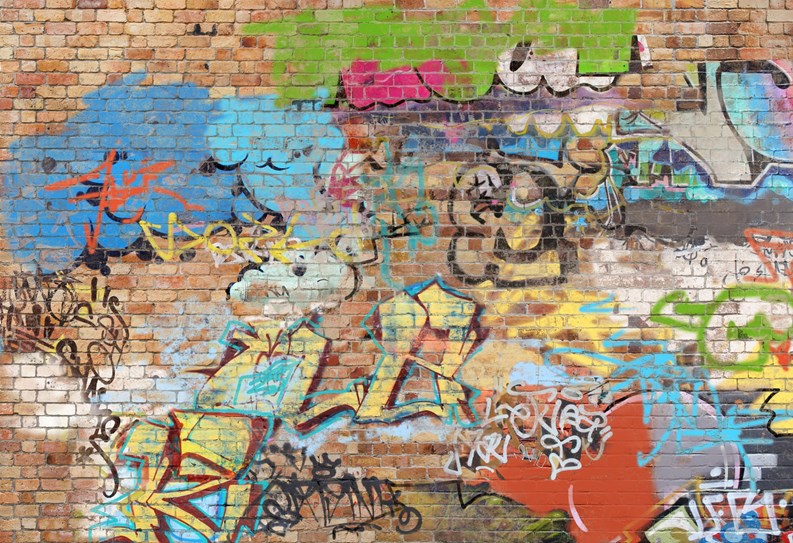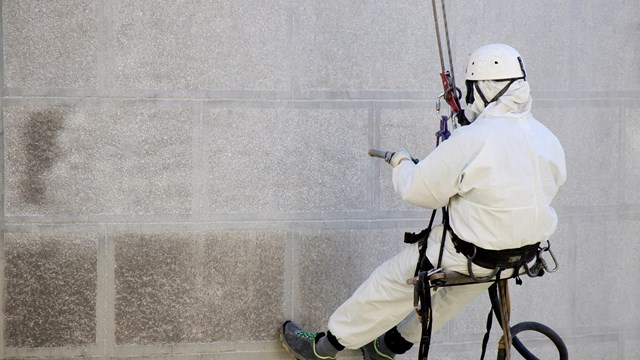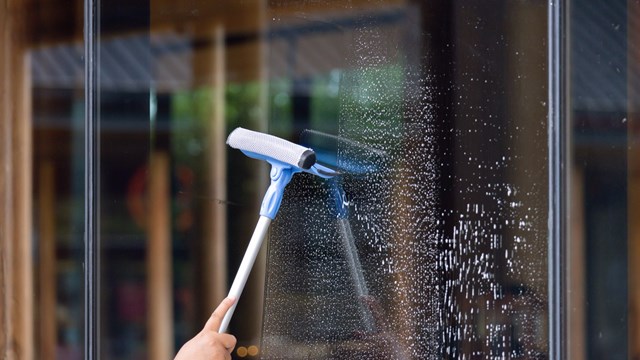While some graffiti certainly qualifies as art, with many considering it a legitimate form of creative self-expression, its lesser variations—tagging, acid, markers, stickers, and ‘scratchitti’ (etchings carved into surfaces with knives, razors or other sharp objects)—tend to be viewed as nothing more than unsightly nuisances at best, acts of criminal vandalism at worst.
Regardless of artistic merit, graffiti remains illegal in most municipalities, and dealing with it and other forms of vandalism can be a huge hassle for property owners in co-ops, condos, and HOAs. Defacement makes a building appear neglected, and leaves building owners and residents on the hook for the high costs of cleaning or removing the damage.
Prevention & Cleaning Measures
Kahlil Gonzalez, Director of Operations at Hi-Tech Cleaning Services in Yonkers, New York, says he deals with a lot of street graffiti, meaning the aforementioned spray-painted tags and etching—not commissioned pieces of art. These can be difficult to repair or remove because of the materials used and surfaces affected. “Each material requires a different approach,” he says, “and some surfaces—like fine stone or marble—are nearly impossible to fully clean once defaced.”
The tools and substances used to deface a surface make a big difference in how the surface is cleaned—or if it even can be cleaned. Oil-based paints that are very thin soak into almost any surface, making it a “nightmare” to clean, says Gonzalez. He also warns about the methods used by vandals: “We often notice people have used commercial tools to do these big, tall pieces of graffiti; and they’re using rope repels from roofs and getting it to the middle of a building. This makes it very difficult for a property manager or building owner to clean, because now you have to put up scaffolding to get to the defaced area. The cunning of the graffiti writer is a problem.”
Porous surfaces absorb ink and paint better, making removal even more of a challenge, requiring chemical treatments and abrasive cleaning to remove surface defacements. “Sometimes, no matter how much chemical you use or how much you wash it, you can never truly get it fully clean,” concedes Gonzalez. “If this is the case, especially on the exterior of the building, then repainting would likely be the best option.”
Scratchitti and other etchings can be even more of a problem than paint or ink, as the markings are gouged into the surface and cannot simply be washed off. In this case, marred surfaces—like windows, or glass doors, for example—may need to be entirely replaced, which of course adds up to both an expense and an inconvenience. Proactive deterrent methods like security cameras and improved lighting in vandalism-prone areas, as well as anti-graffiti wall coatings can help to keep costs and repairs down, though results may vary.
Greg Cohen, CEO of Impact Realty, a property management company based in Long Island City, New York, says that in his experience, buildings that have installed cameras have seen instances of vandalism go down tremendously over the years. “The key is good lighting and cameras around the building,” says Cohen, “It is absolutely a deterrent. It’s not as bad now as it has been in the past.”
If the cameras and well-lit areas don’t keep offenders away, Gonzalez suggests preventative anti-graffiti surface coatings to help building owners and boards tackle this issue. Clear anti-graffiti coatings bond to the treated surface, preventing inks and paint from soaking in or staining, making removal of the graffiti easier. According to Gonzalez, some coatings, like epoxy, act as a permanent barrier, while others, like water-based acrylic, may require periodic reapplication, usually only lasting through one act of vandalism and its removal.
“The key is to remove graffiti immediately,” says Cohen, “because it does tend to attract more graffiti: once you find graffiti, it starts to increase in occurrence,” says Cohen. Acting quickly helps prevent more defacement and discourages future incidents.
When employing cleaning methods, Gonzalez recommends hot water power washing, unless the surface is too delicate to withstand the heat. “You need to know the surface material you are working with, because you don’t want it to soften,” he says. “If that’s the case, then you will need to use cold water and an industrial graffiti removal chemical. Which chemicals we use also depends on the surface material.”
Rubbing alcohol works on light paints. Paint solvents are more effective, but can damage delicate surfaces. There are also more environmentally friendly options worth trying, including citrus oils that can help break down ink and paint, and baking soda, which is abrasive, but not as harsh as caustic chemicals like lye.
Graffiti Legal Compliance
In addition to making clean-up a hassle, vandalism can also bring on legal and insurance repercussions for owners who fail to comply with local ordinances that aim to maintain community standards and property values. If graffiti is not removed promptly in many jurisdictions within New York, property owners can face fines because they have a duty to keep their property graffiti-free.
Building owners typically have 35 days to remove graffiti, or to contact the Department of Sanitation. According to New York City legal code § 10-117.3, Remedies for failure to remove graffiti from certain premises, the owner of every commercial and residential building shall keep and cause to be maintained such building free of all graffiti.
Many major cities across the country have free graffiti removal programs. In the Big Apple, people can sign up for help through the Department of Sanitation’s Graffiti Free NYC program, which owners and managers can call to report graffiti by calling 311. In addition to reporting graffiti or requesting removal, there is also an option to enroll in the Forever Graffiti Free program, granting the city permission to remove graffiti from a particular property whenever reported. How reports are handled depends on where the graffiti is located at a building site, but “they are easy to find and come around pretty quickly when called,” says Cohen. More information on Graffiti Free NYC can be found by visiting portal.311.nyc.gov.
Gonzalez notes that property owners often call their management companies troubled by the amount of graffiti that needs to be removed and the looming costs. “The City will tell them they need to remove it, but they can’t afford to, or they don’t have the means of doing it themselves,” he says. “I do feel bad for a lot of property owners, because they’re people who work hard just to be able to live in the city, and have to deal with this—especially if they are elderly and can’t go outside to clean or paint over a wall.”
Property owners take pride in their buildings and by taking proactive measures and responding quickly to new sightings of vandalism, they can help keep acts of defacement to a minimum. Surveillance cameras, building lighting, and community awareness help buildings stay clean, safe, well-maintained, and graffiti-free.
Kate Mattiace is Associate Editor of CooperatorNews.










Leave a Comment